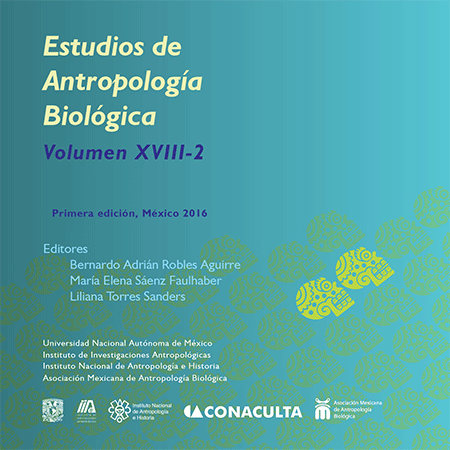Implements used in Mesoamerican Intentional Cephalic Modification though ceramic figurines records. A view though time of child care and gender adscription
DOI:
https://doi.org/10.22201/iia.14055066p.2016.56870Keywords:
Ceramic figurines, Mesoamerica, head shaping, implements, infant rearing, genderAbstract
Being a deeply rooted body tradition among pre-Hispanic Mesomericans, head shaping practices left also many material expressions in the archaeological record; concretely in the form of cranial evidence and imagery. For this study, we have examined systematically a series of some 70 images of figurines from different corners and times of the Mesoamerica. All figurines under study represent scenes of infant modeling and show some of the biovital characteristics of those involved in the processes and the instruments they employed for this purpose. We generally noted that the gender of the infants does not appear to be relevant in the head modeling scenes. All practitioners appear to be females (according to the type of dress and body silhouette), who employ cradleboards, swaddling, bands and free tablets for constricting and compression their infant’s head. Apart from the merely technical attributes of compression, the representations hint also at that implements were used at the same time for additional purposes in child rearing. The present results are discussed in the light of craneologic evidence and ethnohistoric accounts.
Downloads
Downloads
Published
How to Cite
Issue
Section
License

http://creativecommons.org/licenses/by-nc-nd/4.0/


